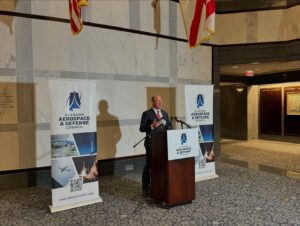Auburn renames Mike Hubbard Blvd as state awaits the day he reports to prison

The road Mike Hubbard takes to jail won’t have his name on it.
Auburn discusses changing road name from convicted ex-speaker

Mike Hubbard requested the name change in a letter.
Richard Shelby announces $43.3M for new agricultural facility in Auburn

Auburn University will be receiving $43.3 million in federal funds to construct a new U.S. Department of Agriculture (USDA) Agricultural Research Service (ARS) National Soil Dynamics Laboratory as part of the agency’s capital improvement strategy, U.S. Senator Richard Shelby announced Monday. “I am proud to have secured funding for the new ARS facility in Auburn,” Shelby aid. “The soil lab will serve as an outlet for the USDA to complete research that will improve crop and livestock production for Alabama and the entire nation. I look forward to the work that will result from the partnership between Auburn and the USDA, and I am confident the project will continue to enhance our state’s thriving agriculture industry.” The $43.3 million in funding for the new ARS National Soil Dynamics Laboratory was provided through the H. J. Res 31: the Consolidated Appropriations Act, 2019, the final Fiscal Year 2019 appropriations package signed into law on February 15, 2019. Research done at the facility will focus on improving the productive and sustainable use of soil and water resources for increased crop and livestock production. The funding will allow for relocation and construction of the new facility, which will take the place of the current laboratory at Auburn. “The new facility will further Auburn’s drive to inspire through life-changing innovation,” said Auburn President Steven Leath. “Auburn will deepen its relationship with the USDA, more opportunities will emerge for our students and faculty and Auburn will be in a better position to solve real-world problems. Once again, Sen. Shelby has proven himself a champion of science and research that improves quality of life and fosters economic opportunity for farmers in Alabama and across the nation. We’re grateful to him for making it happen.” Agriculture is Alabama’s top revenue producing industry, generating an annual state-wide impact of over $70 billion. With over nine million acres of farmland and more than 48,500 farms, the state is a national leader in food production and a global competitor in the poultry, catfish, timber, cotton, and livestock industries.
The results are in: 2018 Municipal Election Day

On Tuesday, several municipalities across the state of Alabama held elections for city seats, new mayors, and school board members. Several races resulted in a runoff, including the race for mayor in Auburn, city council seats in Montgomery, Bessemer and Huntsville. Ozark approved alcohol sales on Sunday, while Muscle Shoals denied a property tax increase. Municipal Election Results: Auburn According to the Auburn Villager, mayoral candidates Ron Anders and David Hill will head to a runoff election, as will Ward’s in place 2, 5 and 6. Race winners were: Ward 1: Connie Fitch Taylor with 328 votes Ward 7: Jay Hovey with 701 votes Ward 8: Tommy Dawson with 414 votes. Bessemer Incumbent mayor Kenneth E. Gulley won the mayor’s race with 68 percent of the votes on Tuesday, but almost all other races resulted in a runoff. According to the City of Bessemer, City Council District no. 1, 2, and 3, resulted in a runoff. As did, Board of Education District No. 1, 5 and 7. You can view the full results here. Gadsden Incumbent mayor Sherman Guyton faced four opponents in the Gadsden mayor’s race, but won with 47 percent of the votes. A runoff will be held for Gadsden city council seat 5 between Jason Wilson and incumbent Billy Billingsley Sr. Huntsville Only city council and school board seats were up for election in Huntsville Tuesday. Jennie Robinson won the District 3 city council seat with ease, garnering 73 percent of the votes. According to AL.com, the District 2 city council seat is headed to a runoff election. Muscle Shoals Muscle Shoals voters heavily denied the “5-Mill Tax Increase,” voting against the increase by 81 percent. The property tax increase, if approved, would have raised the existing 7.5 mills dedicated to education to 12.5 mills. “School officials said they would use the revenue generated by the additional 5 mills to seek a $20 million bond issue earmarked specifically for capital improvements,” the Times Daily reported. Ozark According to WTVY, Ozark voted to approve alcohol sales on Sunday by 73 percent, adding themselves to the growing number of Alabama cities willing to do so.
It’s Election Day in some cities in Alabama

It’s Election Day! In August? Yep. Some big municipal elections are happening in many cities in the Yellowhammer State today; Auburn and Bessemer are among those who will have a chance to elect a new mayor, and members of the Huntsville and Mountain Brook communities will be electing city council seats. Oneonta, Jacksonville and Opp are holding elections for their city school boards; and the city of Ozark will decided today whether or not they will allow alcohol sales on Sunday. According to the Alabama Secretary of State’s office, the following elections will be held today: City of Huntsville – Regular Municipal Election – City Council Seats City of Opp – School Board Election – Districts 1, 2, and 4 City of Mountain Brook – Municipal Election – City Council Seats City of Oneonta School Board Election – Places 2 and 4 City of Ozark – Election for Sunday Sales of Alcohol City of Scottsboro – Municipal Election – City Council Seats City of Auburn – Regular Municipal Election City of Phenix City – Referendum for Elected City School Board City of Muscle Shoals – Ad Valorem Tax Election for Educational Purposes City of Bessemer – Regular Municipal Election City of Jacksonville – School Board Election – Places 1 and 2 Sample Ballots and full lists of candidates for some cities: City of Huntsville City of Mountain Brook City of Bessemer City of Auburn
After 20 years, Auburn Mayor Bill Ham will not seek re-election
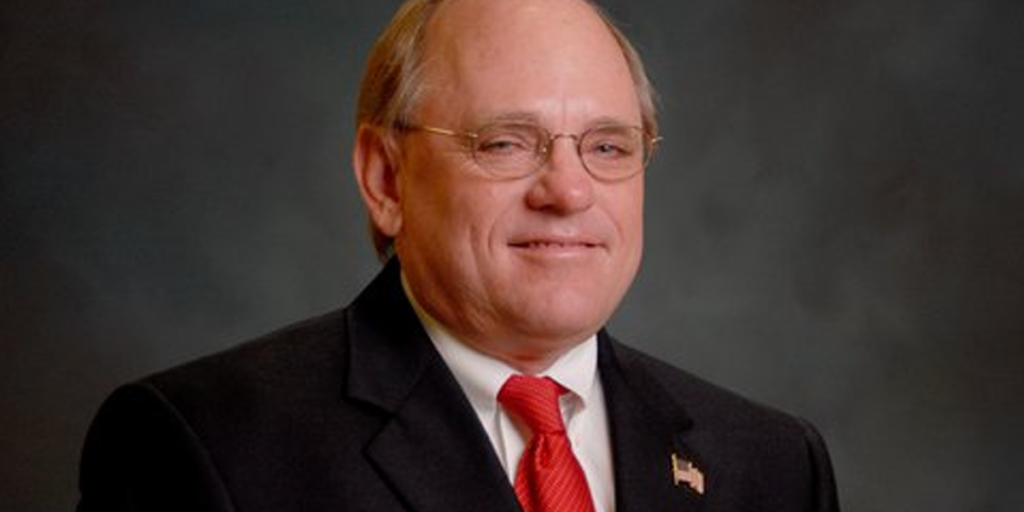
Mayor Bill Ham announced he will not seek re-election or be a candidate in the upcoming August 24 Municipal Election. Ham made the announcement at the annual Memorial Day Breakfast on Monday morning. “What your confidence, trust and friendship over the years has meant to me can’t be measured,” Ham said at the breakfast according to OANow. “So, I thank you for giving me the opportunity to serve you in this important job as mayor. Now is the time for the city to move on with new leadership. Although I feel we have accomplished much, the best days for this community and this university lay ahead of us,” he told the audience. Ham has led the city of Auburn since 1998 and has served five terms. Prior to that he served on the Auburn City Council for twelve years. “I’m 64 years old, I’ve got grandkids, and I’ve got a few fish to fry, if you will. Some things I would really like to get done both business wise and family wise,” he told WSFA. Ham received a commemorative eagle for 20 years of outstanding service to the Veterans Committee at the breakfast. He said he made the announcement at the memorial day breakfast out of respect for veterans and other leaders in attendance. A member of the Auburn Veterans Committee and Auburn City Councilman, Dick Phelan said the announcement was unexpected. “Needless to say, we’re going to miss him, not only as mayor, but as leader of this community,” Phelan told the Auburn-Opelika news. “Congratulations on not only being a good mayor, but on being one heck of a guy.”
Here are the top 10 ways the proposed 2018 Farm Bill will affect Alabama
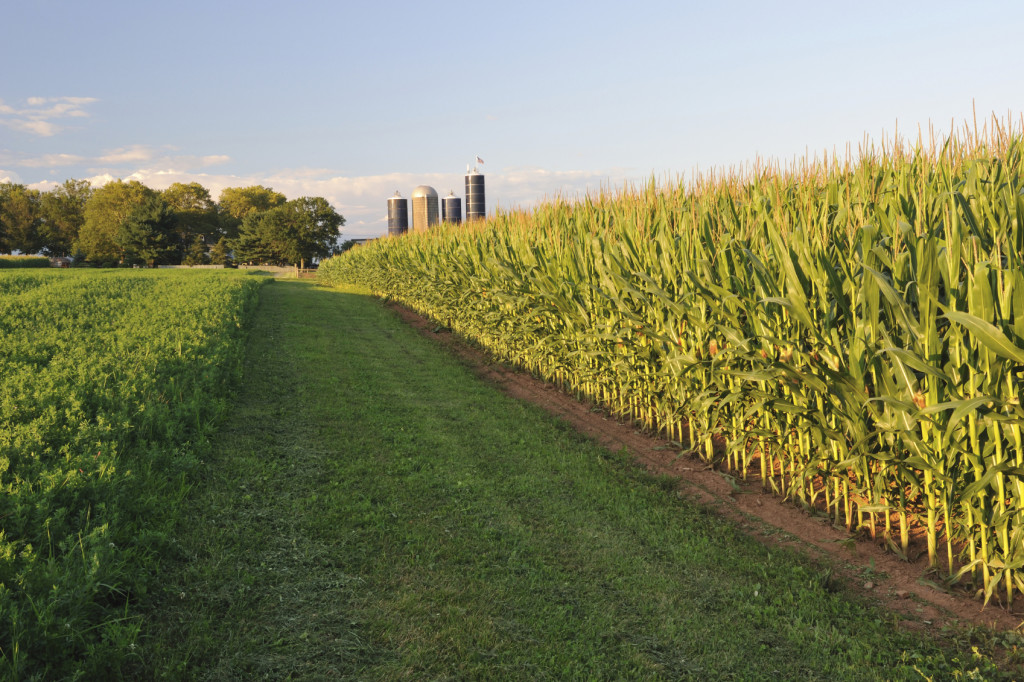
Alabama is home to a $70 billion agriculture economy, which is why the Agriculture and Nutrition Act of 2018, H.R. 2, better known as the “Farm bill” is particularly important for Yellowhammer State farmers. The bill is headed for a vote on Friday by the U.S. House of Representatives. Already, some Alabama representatives are speaking out in support of the bill, but if passed, how will it really affect the Yellowhammer State? Alabama 3rd District U.S. Rep. Mike Rogers, the only Alabama member of the House Committee On Agriculture, issued a statement on Thursday explaining how the bill will affect Alabama’s many farmers. “The truth is that the agriculture industry makes up over 40 percent of the economy in the State of Alabama,” said Rogers. “Every five years, Congress has to renew the Farm Bill and the policies that are critical to setting the guidelines for our farmers and producers.” Rogers continued to say that the Farm Bill will reform the Supplemental Nutrition Assistance Program (SNAP) by encouraging individuals to get work or free training to help pull themselves out of poverty; a condition that will only apply to able-bodied adults. The bill will also help bring higher quality broadband service to rural areas in the State by incentivizing providers. “I was also pleased my amendment was included, the SNAP Vitamin and Mineral Improvement Act,” Rogers said. “It would allow low-income Americans to purchase a daily multivitamin-mineral supplement with their SNAP benefits to make sure they are getting their daily nutrients and add choices to SNAP while not changing the costs.” Top 10 ways the 2018 Farm Bill affects Alabama: Farm policy: ARC and PLC. The bill reauthorizes and strengthens the Agriculture Risk Coverage (ARC) and Price Loss Coverage (PLC) options through 2023. Producers are given an opportunity to make a new election between ARC and PLC with several improvements, including allowing a new yield update opportunity for producers who were facing severe drought during the previous yield update, allowing reference prices to adjust to improved market conditions, and prioritizing the use of RMA data for administering ARC to minimize disparities between counties. Nutrition. Over 35 improvements are made to the Supplemental Nutrition Assistance Program (SNAP), the nation’s flagship nutrition program. Most notably, existing work requirements are strengthened, streamlined and paired with a variety of options to increase opportunities for SNAP recipients, including participating in a fully-funded, guaranteed Employment & Training (E&T) slot. Individuals may choose not to participate, but they will no longer be eligible for SNAP. The Farm Bill would not kick 1,000,000 SNAP recipients off the program: Anyone who would leave the program would do so because they have obtained employment with sufficient income and are no longer be eligible or they choose not to work or participate in a work or training program for at least 20 hours per week. No one would be kicked off SNAP due to a mandatory work requirement. The bill would not enforce work requirements on the disabled, the elderly, expectant mothers, caretakers of children or children: Any able-bodied adult on government assistance should be working at least 20 hours per week. SNAP is a tool to bring individuals and families out of poverty using the work requirements and training program. Dairy policy. The Margin Protection Program is renamed the Dairy Risk Management (DRM) program. The first 5 million pounds of milk production on a dairy is made eligible for higher coverage levels at lower premiums. Milk production not covered under DRM is made fully eligible for a comparable crop insurance policy. Finally, feed costs are studied to ensure accuracy in the DRM, and class I milk calculations are adjusted to help dairy farmers better manage risk in the futures market. Trade. Given escalating use of illegal trade actions by foreign countries, the farm bill stands by Alabama’s farmers and ranchers, providing a strengthened safety net and authorizing and restoring funding for vital tools for trade promotion and market development. The farm bill also maintains long-standing legal authority for the secretary to provide assistance to farmers and ranchers affected by unfair foreign trading practices. Establishes an International Market Development Program. Maintains and strengthens the program purposes of the Market Access Program (MAP), the Foreign Market Development (FMD) Program, the Technical Assistance for Specialty Crops (TASC) Program, and the Emerging Markets Program (EMP), bringing these initiatives under the single umbrella of a $255 million per year International Market Development Program, with no less than $200 million for MAP, no less than $34.5 million for FMD, $10 million for EMP, and $9 million for TASC. Conservation. The farm bill prioritizes working-lands conservation by retaining and folding the best features of the Conservation Stewardship Program (CSP) into the nation’s flagship incentive-based program for voluntary conservation—the Environmental Quality Incentives Program (EQIP). This supports and enables a significant investment in emerging conservation practices like the use of cover crops Crop insurance. At the request of virtually every farmer, rural banker and rural business in the country, the farm bill enhances and protects crop insurance. According to the Ag Committee, “some improvements are made but, overall, the farm bill doesn’t fix what isn’t broken.” Rural development. Rural areas of Alabama lack the same access to broadband and infrastructure that urban areas do. The bill authorizes substantial annual appropriations for rural broadband and requires USDA to establish forward-looking broadband standards. The farm bill also strengthens the suite of rural development initiatives to promote jobs and economic activity in rural Alabama where employment is suffering due to the sharp downturn in the farm economy. Tackling the opioid crisis. Provides the secretary the authority to prioritize projects that help communities meet the challenges of the opioid crisis. Funds projects that provide access to telehealth services and build medical facilities in rural communities. It also provides a 33 percent ($25,000,000) increase in authorized funding for critical telehealth grants under the distance Learning and Telehealth Program. Beginning farmers and ranchers. The bill maintains several provisions to help beginning farmers and ranchers establish themselves in agriculture. The bill establishes a scholarship program at
Auburn pharmacy researcher recommends antivirals as key defense this flu season

By: Matt Crouch | Auburn University’s Harrison School of Pharmacy The Centers for Disease Control and Prevention reports the flu is “widespread” across the United States with 48 states reporting widespread activity. With this year’s strain having such an impact, Dr. Marilyn Bulloch, a clinical faculty member in Auburn University’s Harrison School of Pharmacy, suggests the use of antivirals in prevention and treatment. Both the influenza A and influenza B viruses are prominent this year with nearly 15,000 flu-related hospitalizations since October. Vaccines are available through pharmacists and physicians and have shown some resistance to this year’s strain. According to Bulloch, antivirals have shown to be an effective complement to the flu vaccine. “Anyone who is diagnosed with the flu and does not have a reason to not seek therapy can receive antivirals,” said Bulloch. “Studies have shown that they decrease symptoms by several days. This season, the virus has been particularly virulent, and a few days without symptoms such as fever, gastrointestinal upset and muscle aches may help reduce complications of the flu such as hospitalizations.” Current options include Tamiflu (oseltamivir) which is available orally and Relenza (zanamivir), which is an inhalation product that comes as a Diskhaler. For children, Zanamivir is approved for treatment in those over seven and prevention in children over five. Oseltamivir is historically the most common antiviral and can be used for treatment at any age over two-weeks old and for the prevention of influenza in patients over three months of age. There is a one-dose IV product available but it is unknown how many hospitals and urgent care centers have it available. Only Tamiflu is recommended for patients who are hospitalized. There are certain populations that antivirals are strongly recommended this flu season. They include: children over two and adults over 65, those with compromised immune systems, children on long-term aspirin therapy, pregnant women and women who gave birth less than two weeks before influenza diagnosis, American Indians and obese patients with a BMI over 40. Treatment is recommended for patients with certain chronic conditions involving the lung, heart, kidney or liver; those with diabetes, sickle cell, seizures or a history of stroke should also seek antiviral treatment. While it is highly suggested for those populations, anyone with a chronic medical treatment should discuss with their physician the benefit and need for antiviral treatment. “Treatment is most effective when it is started soon after symptom developed, ideally within 48 hours. However, there is some data suggesting patients may still benefit even if treatment is delayed as long as 72 hours after symptom development,” said Bulloch. “Antivirals are recommended for anyone with a severe case of influenza, whose illness is complicated by other issues such as pneumonia, and for those whose influenza does not start to resolve with time.” The good news for those who may come into contact with the flu is that resistance to the medications used to treat it has been almost non-existent this season. While treatments have been effective, prevention is still key and those susceptible to the flu should be prepared. “People who are exposed to those with diagnosed influenza, including household contacts, should strongly consider getting antivirals for the prevention of influenza rather than waiting to become infected,” said Bulloch. For more information on the flu this season, visit www.cdc.gov/flu/. Republished with permission from Auburn University.
Auburn developing vaccine that could be huge catch for catfish industry
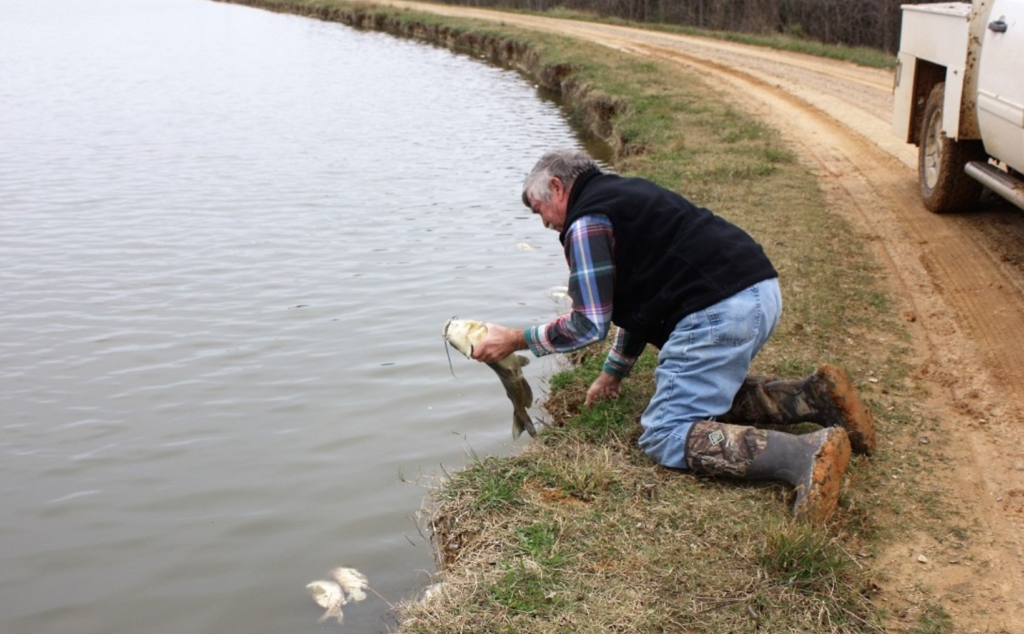
After more than seven years of research and testing, Cova Arias knows the vaccine she developed and patented to immunize catfish against columnaris disease works in a laboratory. She will use $321,000 in U.S. Department of Agriculture (USDA) funds to answer two questions. “Does it work in the field, and is it cost-effective,” said Arias, a professor in Auburn University’s School of Fisheries, Aquaculture and Aquatic Sciences. “The answer to both of those questions has to be yes.” If the answer is yes, Arias, who was awarded the competitive grant in November through the Aquaculture Research Program administered by the USDA National Institute of Food and Agriculture, will move a step closer to giving catfish farmers an effective weapon to combat one of the worst threats to commercially produced catfish. “Last year we lost almost 2.5 million pounds of fish to columnaris disease,” said Bill Hemstreet, a fish health specialist working with Auburn University’s Alabama Fish Farming Center in Greensboro. “It varies from year to year.” Catfish farmers try to avoid treating fish with antibiotics. The return on investment isn’t very good and they don’t like the image it gives the industry. So, they have little at their disposal to combat the disease. “It would be a huge step forward if we could get a vaccine that worked, particularly if you could vaccinate the fish when they were fry or fingerlings,” Hemstreet said. Devastating disease Catfish ponds are stocked at 8,000-10,000 fish per acre. When disease infects a pond, it can spread from fish to fish quickly. An outbreak of columnaris disease has the potential to inflict heavy damage. “We’re talking tens of thousands of fish,” said Townsend Kyser, who works with his father and brother on Kyser Family Farms in Greensboro, an operation that produces 3.5 million to 5 million pounds of catfish annually in 50 ponds covering about 700 acres. “It can devastate an entire pond. A vaccine would certainly help. An entire pond is a loss we can’t have.” Columnaris thrives in the nutrient-rich conditions a catfish pond provides. It attacks the fish through the mucous membrane covering their skin and gills. The best way for catfish producers to combat the disease is to reduce the amount of food they feed their fish and to work diligently on maintaining high water quality. But slowing the feeding rate reduces the number of fish they can raise and slows their growth rate. “We’ve lost enough fish to disease that we could have retired several times,” said Bill Kyser, Townsend Kyser’s father. He has raised catfish since the 1960s on land that has been in his family since the 1940s. “A vaccine could be extremely useful.” But getting the vaccine to market won’t happen overnight. “I’d be happy if we had someone using the vaccine in five years,” Arias said. Market obstacles Getting to this stage of development has been difficult because the agricultural companies that manufacture vaccines for the commercial market haven’t been interested, Arias said. The bacteria that attack catfish are specific to that species, and there are two types of columnaris disease. The only commercially available vaccine protects catfish against Type I bacteria – the least widespread and mildest form. But Type II bacteria is responsible for about 95 percent of the columnaris infections and is much more destructive. Arias’ vaccine protects catfish against both strains of bacteria. But the company that produces a columnaris vaccine wasn’t interested because it has the only vaccine on the market. Other companies have expressed little interest because, worldwide, the catfish industry is relatively small. The vaccine manufacturers aren’t convinced they can make money even if Arias’ vaccine works. Arias must prove the vaccine works in field conditions. Her tests will attempt to determine whether the vaccine protects the fish and delivers an economic benefit by reducing losses in a cost-effective way. “We know the vaccine works in a lab very well,” she said. “We want to take it outside.” That’s how the USDA grant will be spent. Tests will take place on 400 acres of Auburn University ponds. Auburn is among the few research universities with the large-scale facilities for the testing Arias will undertake. “We are really excited about it,” Arias said. “I think this is the fourth time we submitted it and it was finally approved.” Exciting possibilities If the field tests prove successful, there is still much to be done to produce a commercially viable vaccine. In the end, it may wind up something that Auburn has to produce and distribute, Arias said. “It needs to induce protection that will last long enough to be effective,” Arias said. “It has to be cheap to produce, easy to deliver and it has to fit with the production scheme.” What that means for catfish farmers is a vaccine that can be administered to very young fish by immersing them in water containing the vaccine, or through a vaccine that is incorporated into food. But vaccinating fry and fingerlings has drawbacks. “Unfortunately, the fish are too small to develop an immunity,” Arias said. “We need to find a way to deliver the vaccine when the fish are larger.” Ideally, that would be accomplished through food. But the first tests will deliver the vaccine by immersion. “I’m excited about the potential of one that will work,” said Townsend Kyser. “That would put a lot of money not just back in our farm, but the community as well.” Republished with permission from the Alabama NewsCenter.
Crimson Tide in the college football playoffs; Auburn faces another unbeaten in Peach Bowl

A really imaginative tweet went out Saturday night. “With the noon (Eastern) time college football playoff show, will there even be church services in Alabama, or just all morning prayer vigils? Houndstooth blazers required.” With the noon time college football playoff show, will there even be church services in Alabama, or just all morning prayer vigils? Houndstooth blazers required. — drgraves-UGA Adm. (@drgravesUGA) December 3, 2017 Those prayers of Crimson Tide fans were answered Sunday morning as Alabama was awarded the fourth and final slot in the college football playoffs. Coach Nick Saban’s squad will face CFP No. 1-ranked Clemson in a national semifinal at 7:45 p.m. CST on New Year’s Day in the Allstate Sugar Bowl at the Mercedes-Benz Superdome in New Orleans. “Dabo (Swinney) has done a fantastic job with that program,” Saban said of the Clemson coach. “They’ve been consistently successful and this will be the third year we’ve played them in the playoff. I know our guys will be ready to play and will have a tremendous amount of respect for Clemson. We’ll have to play our best game of the year to have a chance to be successful against them.” The No. 2 Oklahoma Sooners and No. 3 Georgia Bulldogs will play in the other semifinal game at the Rose Bowl in Pasadena, California, at 4 p.m. in the Rose Bowl. Georgia punched its ticket into the playoffs by beating Auburn 28-7 in a rematch of the Tigers’ 40-17 victory three weeks prior. The national championship game is at 7 p.m. on Jan. 8 in Atlanta’s Mercedes-Benz Stadium. All three games are on ESPN. Alabama Athletic Communications reported Sunday that Tide Pride members have until 5 p.m. on Monday, Dec. 4, to submit requests for playoff semifinal and championship game tickets. Each participating school will receive 13,000 tickets for the semifinal and 20,000 tickets to the championship. Other than the tickets allotted to the schools, the game is sold out. All requests made by University of Alabama constituency groups (Tide Pride, lettermen and faculty/staff) will be evaluated for all games following the request deadline. For the Allstate Sugar Bowl, all confirmed ticket requests will be shipped to customers via UPS, with a planned shipment date of Friday, Dec. 15. For the championship game in Atlanta, all confirmed requests are planned to be sent via mobile ticket (email and Ticketmaster app download) delivery with a planned send date of Thursday, Jan. 4. Ticket prices are as follows: semifinal Allstate Sugar Bowl: $275 club and $175 reserved; national championship: $675 (club), $575 (100- and 200-level seats) and $475 (300-level seats). The ability to request tickets does not guarantee tickets. If demand is greater than the allotment of tickets received, refunds will be given based on Tide Totals priority points. Lettermen should note that, if requests received exceed the lettermen allotment, requests will be filled based on last year lettered. UA faculty/staff should note that, if requests received exceed the faculty/staff allotment, requests will be filled based on years of service. “We’re extremely pleased for our team, our players, our coaches and all the people who work hard here for us,” Saban said. “I’d like to congratulate the other teams that will have the opportunity to participate in the playoff as well as the teams who were considered and had potential to be selected. We are really pleased and happy to be a part of the college football playoff again this year.” Since its inception in 2014, Alabama is the only team to appear in all four playoffs, and has appeared in the top five of every poll put out by the selection committee over the past four seasons. The Crimson Tide and Clemson will meet for the 18th time in the history of the series that dates back to 1900. Alabama owns the series advantage, 13-4. The two most recent matchups came in the 2016 and 2017 national championship games. Alabama rallied to defeat the No. 1 Tigers, 45-40, to capture the Tide’s 16th national championship in the 2016 game in Glendale, Arizona. The Tigers returned the favor with a come-from-behind 35-31 win in the 2017 championship in Tampa, Florida. No. 7 Auburn faces American Athletic Conference Champion and CFP No. 12 Central Florida in the Chick-fil-A Peach Bowl’s 50th anniversary game. That contest is set for the Mercedes-Benz Stadium in Atlanta and will be nationally televised by ESPN at 11:30 a.m. UCF is making its first trip to the Chick-fil-A Peach Bowl, while Auburn will make its sixth appearance. Auburn has a 4-1 record in the game, with its most recent appearance resulting in a 43-24 victory over Virginia in 2011. “We couldn’t have asked for a better matchup to celebrate our 50th anniversary,” said Gary Stokan, Chick-fil-A Peach Bowl CEO and president. “To have college football’s only undefeated team square off against the first-ever team to defeat two College Football Playoff No. 1-ranked teams in a season makes for an extremely compelling game.” Auburn’s Gus Malzahn will coach in the bowl game with a new contract. He has agreed to a seven-year deal to remain at the school after a strong late-season rebound, The Associated Press reported on Sunday. Complete financial details were not immediately available but the AP reported Malzahn will make more than $7 million in the final year of the contract. Other Southeastern Conference teams headed to bowl games are: Citrus Bowl presented by Overton (Orlando) – LSU vs. Notre Dame at noon on Jan. 1 on ABC. Academy Sports & Outdoors Texas Bowl (Houston): Missouri vs. Texas at 8 p.m. Dec. 27 on ESPN. Belk Bowl (Charlotte): Texas A&M vs. Wake Forest at noon on Dec. 29 on ESPN. Franklin American Mortgage Music City Bowl (Nashville): Kentucky vs. CFP No. 20-ranked Northwestern at 3:30 p.m. on Dec. 29 on ESPN TaxSlayer Bowl (Jacksonville): Mississippi State vs. Louisville at 11 a.m. on Dec. 30 on ESPN. Outback Bowl (Tampa): South Carolina vs. Michigan at 11 a.m. on Jan. 1 on ABC. UAB got a jump on Selection Sunday. The Blazers released their postseason plans last week, announcing that they’ll play Ohio in the Bahamas Bowl at 11:30 a.m. on Friday, Dec. 22 on ESPN. In other state-connected bowls: R+L Carriers New Orleans Bowl: Troy is the other state team that is
Asteroid named after Auburn faculty member for contributions to planetary science

An Auburn University faculty member has joined an elite group of scientists and engineers whose contributions to planetary science have warranted an asteroid naming. Masatoshi Hirabayashi, assistant professor of aerospace engineering, was honored with the asteroid naming at the “Asteroids, Comets, Meteors 2017” conference in Montevideo, Uruguay, earlier this year. Hirabayashi’s asteroid, 11471 Toshihirabayashi, was discovered on March 6, 1981, at the Siding Spring observatory in Australia by astronomer Schelte Bus. After the discovery of an asteroid, it is given a temporary name and then a catalog number when its orbit is more accurately determined. The International Astronomical Union’s committee on small body nomenclature is in charge of selecting asteroid names based on contributions to planetary science. “Having an asteroid name is a rare and tremendous honor for scientists and engineers,” Hirabayashi said. “I am humbled that the committee placed such great value on my work, and I aim to continue producing influential research results in this area.” Hirabayashi’s work focuses on astronautics and geophysical modeling for small planetary bodies and planetary surface processes, specifically the dynamics and structure of these small bodies. He believes his study on the comet 67P/Churyumov–Gerasimenko, which was published in Nature, was a large factor in the selection of his asteroid name. Hirabayashi plans to travel to Israel in February to observe his asteroid with a colleague who is an astronomer. Hirabayashi’s Space Technology Application Research, or STAR, lab is collaborating with NASA and the Japan Aerospace Exploration Agency on missions that involve asteroids and other small bodies, such as the DART mission and the Hayabusa 2 mission. “In space missions, a better understanding of natural phenomena in space will help us develop innovative technologies and solve challenging problems,” Hirabayashi said. “I would like to conduct interdisciplinary research for critical space missions, such as asteroid mining and deflection.” Hirabayashi joined the Auburn Engineering faculty in August after spending two years as a postdoctoral associate at Purdue University. He earned his doctorate in aerospace engineering sciences from the University of Colorado Boulder. Republished with permission from the Alabama NewsCenter.
Could Auburn coach Tommy Tuberville become Alabama’s next governor?
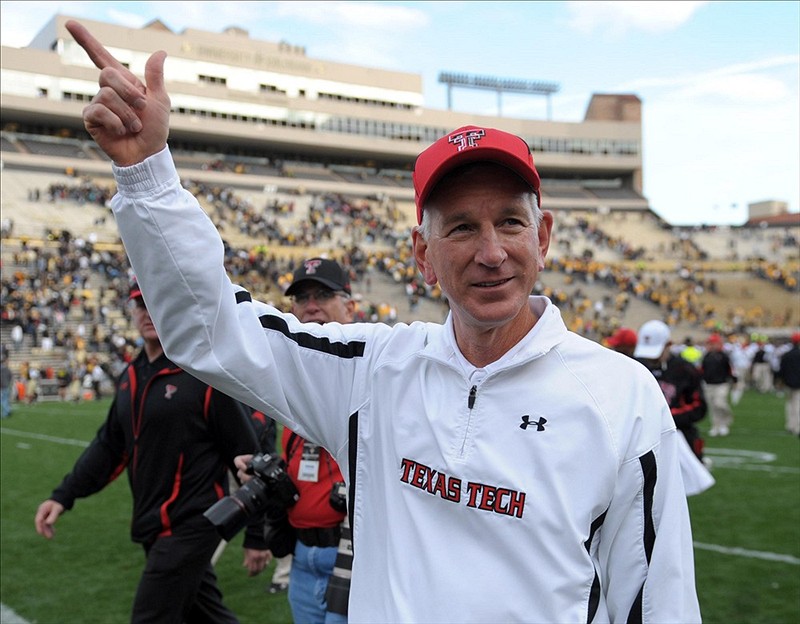
The race for Alabama’s next governor might include a surprising contender: former Auburn football coach Tommy Tuberville. According to Dennis Dodd of CBS Sports, Tuberville will likely make a decision on whether he will run in a week or two based on the results of a statewide phone poll said to involve about 50,000 people. Alabama Republican Party chair Terry Lathan said the former coach might stand a chance given the election of President Donald Trump, while political consultant Steve French said: “Tommy would stand a slugger’s chance of getting elected.” “Everybody wants non-politicians now,” said a person from Tuberville’s camp. “Eighty-percent of it is name recognition.” Tuberville spent 10 seasons as Auburn’s head coach and notched an SEC conference title and undefeated season during his 2004 campaign. Since leaving the Tigers in after the 2009 season, he has served as head coach for Texas Tech and Cincinnati, where he resigned from at the end of the 2016 season. Still, the source of Tuberville’s name recognition might be his most divisive quality when it comes to politics – especially in Alabama, one of few states where school allegiance may trump political leanings. Fifty-eight percent of the state’s elected officials are Republican, and it’s no secret the majority of state’s fans support Alabama. French, however, said Tuberville might be able to connect with fans of his former employer’s rival by emphasizing education. “If you can connect with voters on an education message, that’s a big plus,” he said. “Tommy has recruited. He’s seen underprivileged youth come into his program and go out the other door and be a successful professional the rest of their life.”

